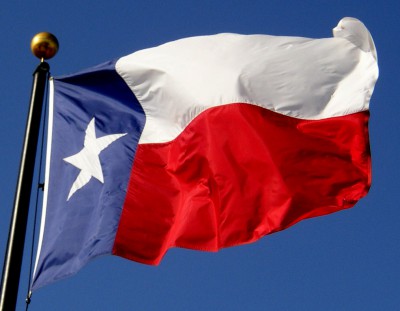
actual results may vary, depending on the wind….
****
The wind industry is the Great Pretender: always claiming to be a real match for conventional power generation sources, but never capable of delivering when it really counts (see our posts here and here).
In Germany, the wind industry is left howling about a weather driven conspiracy against it; as wind power output routinely fails to match its breezily optimistic forecasts (see our post here).
The Brits are clearly victims of the same plot; as the output from its huge fleet of giant fans has plummeted, despite wind farms being planted at a clipping pace (see our post here).
The culprit? Yep, you guessed it: the wind.
Now, it seems, this meteorological malevolence has crossed the Atlantic and has taken hold in the Lone Star State.
Texas piled into wind power in a huge way. But now seems to be ruing its costly wind rush.
The State’s chief financial officer, Susan Combs is clearly angry to discover that wind industry claims about being a serious alternative to conventional generation sources are nothing more than hot air. Her disappointment at wind power failing to live up to the wind industry’s overblown promises has spilled over into a call to slash the fat pile of subsidies thrown at wind power outfits.
Here’s the Austin American Statesman’s take on the Texan wind power debacle; Susan Comb’s report follows below.
State comptroller criticizes wind power subsidies
Austin American-Statesman
Asher Price
23 September 2014
Reflecting a wider discomfort among some top state officials on renewable power, the state’s chief financial officer says the state should rethink its support for wind energy.
Comptroller Susan Combs said that it was “time for wind to stand on its own two feet” as she released a report Tuesday encouraging lawmakers to discontinue subsidies for electricity generation.
While the subsidies, chiefly in the form of federal tax credits as well as school property tax exemptions, have helped make Texas the national leader in wind power, Combs’ report, “Texas Power Challenge: Getting the Most From Your Energy Dollars,” argues that the energy source falls well short in the summer months when Texans use the most power.
Combs released the report as world leaders are meeting at the United Nations to marshal support for the cutting of carbon emissions, which scientists have linked to global warming and which are commonly associated with such nonrenewable sources of electricity as coal and gas-fired power plants.
Environmentalists criticized the report, saying it took a blinkered approach to energy policy.
It understates the subsidies given to natural gas, nuclear and coal plants, said Tom Smith, head of the Austin office of the consumer advocacy group Public Citizen, and “ignores totally the costs of hidden environmental damages caused by these types of plants – such as the wastes from coal mining, fracking or nuclear power generation.”
Russel Smith, head of the Texas Renewable Energy Industries Association, said he had no comment on the Combs report, but in June he told the Statesman that rolling back support for wind power “ignores the obvious — that all energy sources have and continue to receive governmental support.”
But Combs’ attack on wind power echoes a change among some top Republican policymakers. It was GOP Gov. George W. Bush who gave the wind industry a leg up when he signed a law in 1999 mandating that utilities get a portion of their energy from renewable sources. (A federal wind tax credit predates the law signed by Bush.)
Only a few years ago, the state Public Utility Commission mapped the routes for $6.9 billion in transmission lines, paid for by the state’s ratepayers, to deliver wind energy from West Texas and the Panhandle to cities in the central part of the state.
But in June, Donna Nelson, the commission’s chairwoman, said she doesn’t want to add to the “subsidization” of the wind industry.
Behind the shift in attitude on wind lurks an old-fashioned energy turf war as industries compete to provide electricity to Texas’ growing appetite.
In 2007, natural gas was responsible for 45.5 percent of energy generated in Texas; wind clocked in with 2.9 percent. By 2013, natural gas had dropped to 40.5 percent and wind jumped to 9.9 percent.
The issue of renewable energy could be a tricky one for Republicans seeking higher office.
In his campaign for state attorney general this year, Barry Smitherman largely steered clear of discussing his role as the former PUC chairman who had overseen the adoption of transmission line maps. (He lost in the Republican primary.)
And it presents a special pitfall for Gov. Rick Perry: On the one hand, he could point to the state’s wind power success in a general election for president — about 100,000 people across the state work in the renewable energy sector; on the other, he could be weighed down in the Republican primary by his support for the huge investment in the transmission infrastructure, which will be paid by millions of Texans with increases of $5 to $10 a month on their electric bills.
In June, state Sen. Troy Fraser, R-Horseshoe Bay, who authored the 2005 legislation that led to the transmission line system, acknowledged the changing tide. “If (the transmission line system) came up today, it wouldn’t be as easy” to pass, he said.
Austin American-Statesman
STT loves the delusions of grandeur pouring from Renewable Energy Industries Association’s Russel Smith when he talks about “all energy sources have and continue to receive governmental support”. Again, another case of the wind industry being nothing more than the Great Pretender. While conventional generators in Texas may enjoy some modest financial support (just a tiny fraction of that directed to wind power – see below), those power sources all manage to pump power to the grid as and when it’s needed; any time of the day or night; summer or winter; and rain, hail or shine.
Not so with wind power; as Susan Combs details in her report “Texas Power Challenge: Getting the Most from Your Energy Dollars” (pdf available here) – the key points of which are extracted below (courtesy of windwatch.org).
One point worth highlighting from Susan’s report is the monumental failure of wind power to deliver when it counts, as Susan notes:
For summer 2014, even though Texas had more than 11,000 MW of total wind capacity, ERCOT counted on just 963 MW of wind generation being available. The lack of wind generation during summer peak demand means that energy planners, such as ERCOT, have to ensure that a lot of flexible natural gas generation is available to meet the reserve margin.
Texas Power Challenge: Getting the Most from Your Energy Dollars
Susan Combs
Texas Comptroller of Public Accounts
23 September 2014
Natural gas generation contributes the largest share of Texas electricity, particularly during peak demand. During off-peak times, when demand can be a half or two-thirds of the daily peak, many power plants stand idle; operating reserves are needed, however, when demand increases again, or to react to sudden losses of generation or transmission problems caused by equipment failure or bad weather.
On days when temperatures peak in the 60s, non-residential customers use more than two-thirds of the power generated in the ERCOT region. On the hottest Texas summer days, electricity demand by residential customers quadruples to more than half of the state’s total load, peaking in the late afternoon. This requires thousands of megawatts of natural gas generation to be fired up, a flexibility not available with wind generation that is dependent on weather conditions.
Renewables need conventional power backup
Diversifying Texas’ energy portfolio has put wind and solar generation on the grid but has created a new quandary for grid managers: where can power be obtained quickly when the wind stops or clouds reduce solar yields?
- When wind turbines produce less electricity than predicted, grid operators must compensate by relying on dispatchable power plants that can ramp up production quickly to meet demand, and ramp down due to rapid increases in wind generation.
- Daily forecasts can give a general expectation of renewable output, but quick-ramping gas turbines have to be on standby to backstop renewables that are expected to produce only a fraction of their full operational capacity.
- For summer 2014, even though Texas had more than 11,000 MW of total wind capacity, ERCOT counted on just 963 MW of wind generation being available. The lack of wind generation during summer peak demand means that energy planners, such as ERCOT, have to ensure that a lot of flexible natural gas generation is available to meet the reserve margin.
- Wind producers occasionally have to curtail their operations during high generation due to localized transmission infrastructure constraints; this could be alleviated if economical local energy storage technologies existed.
- Although peak solar energy production tends to coincide with peak demand, Texas’ limited solar capacity leaves CREZ transmission lines underutilized when the West Texas wind typically is lowest in early afternoon.
- The reserve margin ordinarily meets the needs of the electricity market because grid operators can dispatch flexible generation to meet higher- than-expected demand or unexpected supply loss. When the operating reserves are insufficient, customers are asked to reduce consumption through demand response programs that reduce the load. In a worst-case scenario, forced rolling outages would be implemented.
Wind generation is lowest during the summer months when energy demand is highest.
The proportion of electricity generated from wind during the hottest summer day of 2013:
- 4 A.M. – Wind generation peaks when overall demand for electricity is lowest.
- 4 P.M. – Wind generation is near its lowest when overall demand is at its highest.
Wind has reliability challenges
Renewable energy poses reliability challenges. The leading concern is whether it can provide electric power every second of every day. Major renewable energy sources are fundamentally limited in how, where and when they can be used; the sun doesn’t always shine and the wind doesn’t always blow, so natural gas backup generation is needed.
Variability and intermittency
Wind power is tied to weather and thus produces variable energy output. Wind variability creates complications for grid operators working to integrate wind power into a grid not historically designed for fluctuations.
Historical wind generation data reveal that the peak production for the majority of Texas wind generation is at night and does not align well with the peak electricity demand during summer afternoons.
- Non-coastal wind turbines generated only about 20 percent of their installed capacity during summer peak-demand hours, while coastal wind production was more than 50 percent of capacity in 2013.
- Non-coastal wind represents 85 percent of both total installed wind capacity and annual wind generation in the ERCOT region.
Transmission lines for wind
The 2005 Texas Legislature approved a major transmission project, the Competitive Renewable Energy Zones (CREZ), to carry mostly wind energy generated in West Texas and the Panhandle to high-demand cities. The project was forecast to cost less than $5 billion but ballooned to more than $6.9 billion to build nearly 3,600 miles of transmission lines and dozens of substations.
The completed project has capacity to transmit about 18,500 MW of electricity to major load centers in ERCOT — that would serve more than 4 million Texas homes.
Consumers will pay for CREZ lines carrying wind energy for 15 to 20 years. The PUC estimates residential customers will pay roughly $5 to $7 per 1,000 kWh used. Based on the average household’s electricity use, that will cost $70 to $100 per year. An ERCOT official told the PUC in August 2014 that further expansion of the West Texas transmission grid could cost an additional $2 billion.
An ERCOT study is under way to provide new and improved transmission from Panhandle wind generation that extends outside its service area. The Panhandle Renewable Energy Zone could provide transmission lines (expanded from the existing CREZ) that would transport electricity to the populated areas of Texas where demand is increasing. No price tag has been identified for these new transmission lines.
The PUC has begun to study whether future transmission infrastructure costs should continue to be paid by all ratepayers or whether electricity generators — specifically renewables that are located far from where the energy is used — should be required to fund any of the costs.
Susan Combs
Texas Comptroller of Public Accounts
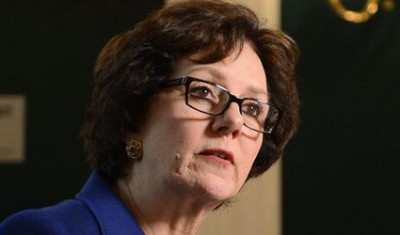

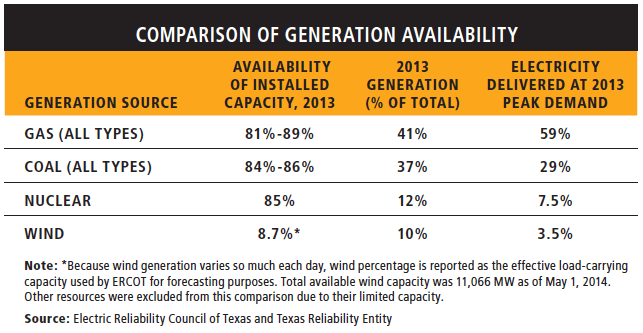
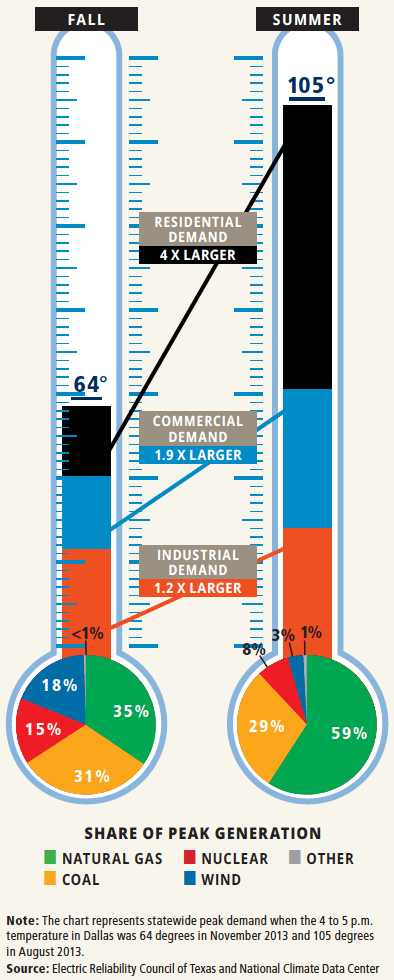
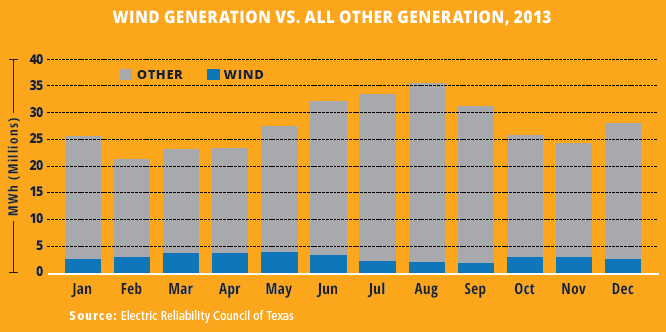
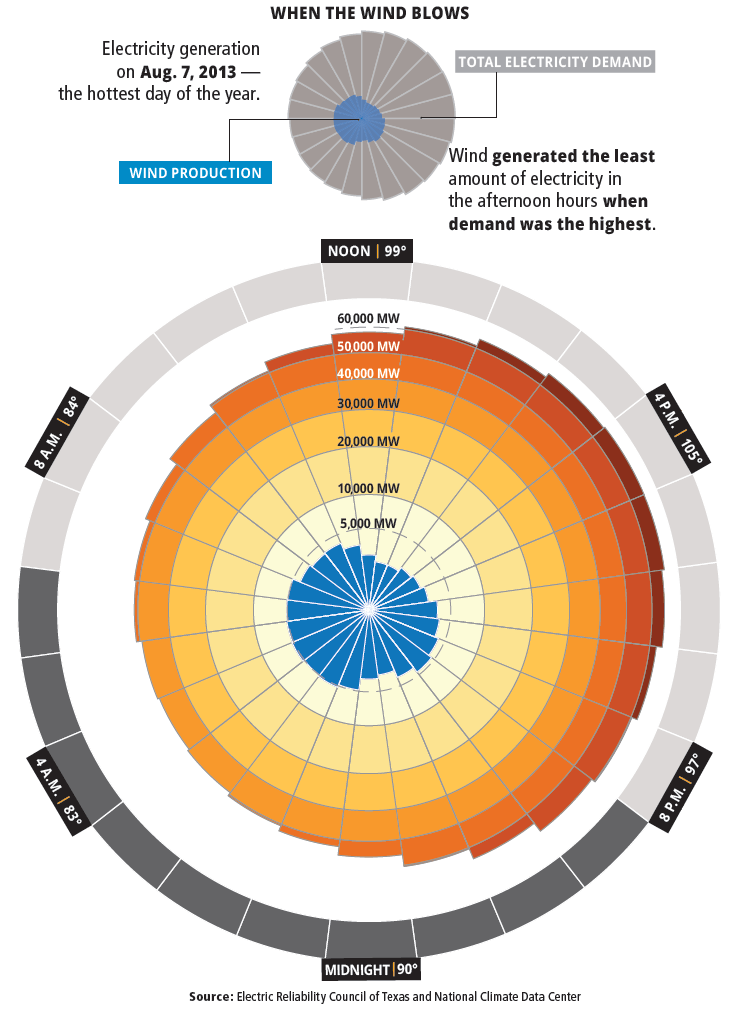


Was anyone watching ABC Big Ideas last night – Holmes a Court and others were rabbiting on about how wonderful wind driven energy is, how well the Hepburn Community Turbines are doing and how much the community supports it. Even SA got a mention, we the 30+% of required energy we generate from wind, and how our energy prices are coming down!!!!
Did you know that renewables in Germany and especially wind have created a wonderful environment for industry and the Germans are so happy about it. They even suggested that less infrastructure was going to be needed as more people turn to solar, and off grid solar.
Funny how here in SA we are going to be charged in our energy accounts for the increase in infrastructure and interconnectors to Victoria, to enable more intermittent wind energy to be transferred across the border and cheaper coal powered energy is sent back during shortfall energy supplies.
And so they went on and on and on. Not one mention of the actual cost, or that the energy produced relies on intermittent supply of wind, or more energy is often produced by the wind during the night when it’s not needed.
The need to keep fossil produced energy on the go to be ready to step in when wind is not producing, that there are questions over this particular energy sources safety to human health and the environment. Just the everything is wonderful – too good to be true – being doled out to the awe struck audience of city ‘greenies’, with the speakers sitting in front of a back drop sign stating ‘The Planet Speaks’ along with the Uni SA logo.
The Texas figures are optimistic. AEMO generation information provides the following for NSW (which will be the same for Queensland):
‘Due to the intermittent nature of wind, wind generation capacities are de-rated to account for the output most likely to be available during times of maximum demand. AEMO refers to this as the “firm contribution” from wind generators during peak periods. For 2013–14 these figures are 2.0% of the installed capacity during summer, and 4.1% during winter, based on the contribution factors published by AEMO in the 2012–13 NEM Historical Information Report.’
And, folks, that percentage only has an accuracy of 85%. Surely someone should have worked out by now that this is truly a fraud!
Once again the scenario depicted in this post demonstrates how ‘smart’ people are easily fooled by loud mouthed propaganda. There is now so much empirical based evidence from around the world that proves ‘wind power’ is a total con job that any government or any person that still supports the promulgation of industrial wind turbines is just plain ‘ dumb’ or ‘on the the take’ or both.